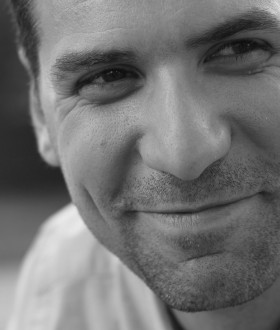A firefighter would never claim to be too busy to haul out the hose.
A surgeon doesn't skip sewing up an incision because she's behind schedule.
Pilots always find time to extend the landing gear.
For the past 20 years, I've had lots of roles and responsibilities as a business owner, manager, and executive leader that demanded I make choices about how I spend my time.
I've also spent about the same amount of time on stage as an improviser where I collaborate with other improvisers to create and perform stories on the fly for all sorts of audiences.
Over two decades of improvising, I’ve never heard any performer claim that they were too busy to make a great choice on stage:
“I was going to tell a better story, but life is just crazy right now.”
Certainly, every improviser has gotten off stage many many times knowing that they could have done better, but lack of time is not an acceptable scapegoat.
When we know what is important, lack of time doesn't rate on our list of excuses.
Building a great story has plenty of challenges. Improvisers may be too distracted or too scared to make better choices—but never too busy.
In life, however, we all claim to be too busy to build better stories for ourselves on a fairly regular basis.
The truth is, whenever you say, “I’m too busy,” or “I don’t have enough time,” you don’t really mean either one. What you’re actually saying is one of 3 things:
Truth 1: "I’m deciding to use my time for other things that are more important to me.”
What it means: You’re on track and making choices in line with your values, goals, and priorities. You know the story you want to build and you're creating it in the best way you know how.
Next questions: How, if anything, can I be more efficient so that I can do more of what’s important to me? Are there even bolder choices that would get me closer to the story I’m trying to build?
Truth 2: “I’m deciding to use my time for other things that are less important to me.”
What it means: Your goals and your actions are out of whack—you’re not doing what’s really important. It’s time to make some adjustments. Often this happens because you are more concerned about the reactions of your audience (your boss, your clients, your neighbors) than the greatness of the story.
Next questions: What do I need to sacrifice for the sake of something more important to the story I’m trying to build? Am I choosing less important actions because they are safer and more comfortable? These questions require courage and brutal honesty. Don’t fool yourself into thinking that Truth 2 is about efficiency. Getting efficient at things that aren’t important to you just makes you ineffective faster and more often.
Truth 3: “I’m not sure what’s really important to me right now.”
What it means: It’s time to call a timeout and reflect. If you’re not sure what’s most important, it’s going to be hard to be very good at anything that matters.
Next question: Why am I working so hard? What’s the story I most want to write for my life? These are purpose questions. (Doing a life audit is a great way to get clearer on these values.) If you believe you’re too busy to ask “Why?”, when will you have the time? Once you finish wrapping up all the distractions that don’t serve a purpose? Rambling stories that don’t drive to an intended conclusion often aren’t very satisfying—on stage or off.
What makes great improvisers so impressive is that they are always asking about the Why behind their characters and their stories. When they don’t know the purpose of the story that they are telling, they keep asking themselves questions and playing with their scene partners to figure it out.
When we as improvisers, entrepreneurs, employees, managers, spouses, leaders, and citizens are clear about our Why, we become great choice-making machines.
The great harm of telling ourselves we’re too busy is that implies that we have no choice. That’s hardly ever true. On stage or off. What makes it feel that way is not that we don’t know what we are choosing. It’s that we don’t know why we are choosing.











